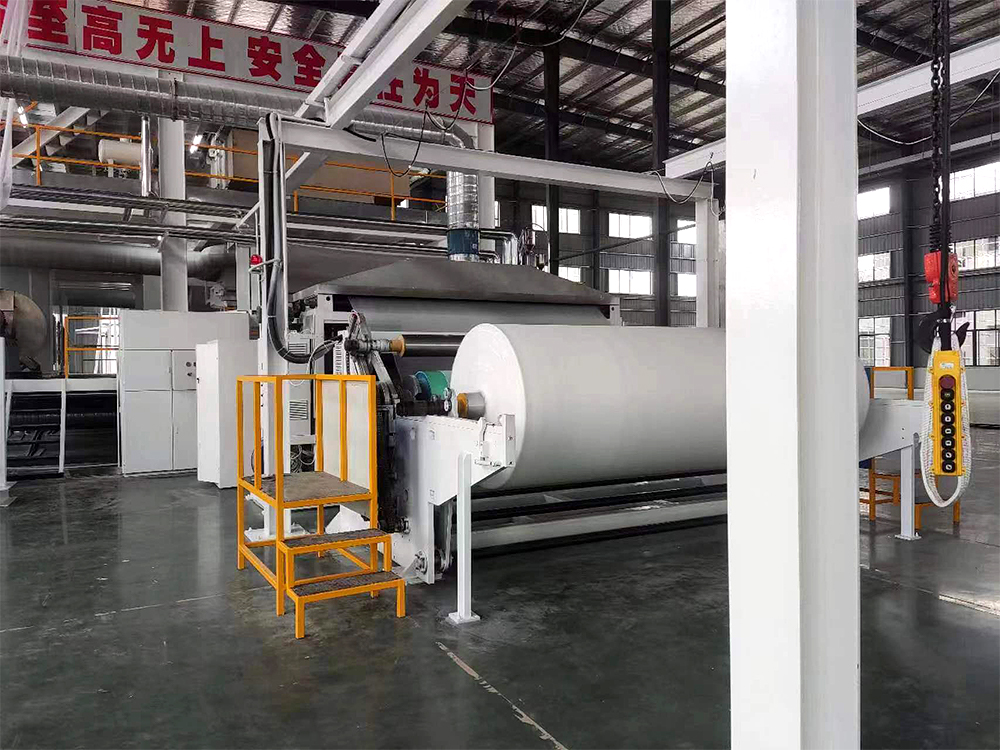The non-woven fabric has no warp and weft threads, so it is very convenient to cut and sew, and it is light and easy to shape.
Because it is a fabric that does not require spinning or weaving, it just orients or randomly arranges textile staple fibers or filaments to form a web structure, and then uses mechanical, thermal bonding or chemical methods to reinforce it.
It is not interwoven and braided by yarns one by one, but the fibers are directly bonded together by physical methods, so when you get the sticky scale in your clothes, you will find that, You can’t get a single thread out. Nonwovens break through the traditional textile principles, and have the characteristics of short process flow, fast production rate, high output, low cost, wide application, and many sources of raw materials.
The relationship between non-woven fabrics and spunbond fabrics
Spunbond and non-woven fabrics are subordinate. There are many production processes for the manufacture of non-woven fabrics, of which spunbond is one of the non-woven production processes.
(Including spunbond, meltblown, hot rolling, spunlace, most of the non-woven fabrics on the market are produced by spunbond)
According to the composition of non-woven fabrics, there are polyester, polypropylene, nylon, spandex, acrylic, etc.; different components will have completely different styles of non-woven fabrics. The spunbond fabric usually refers to polyester spunbond and polypropylene spunbond; and the styles of these two kinds of fabrics are very similar, and can only be judged by high temperature test.
Non-woven fabric is a kind of non-woven fabric, which directly uses polymer chips, short fibers or filaments to form fibers through air flow or machinery, and then undergoes hydroentanglement, needle punching, or hot rolling reinforcement, and finally after finishing Formed non-woven fabric. A new type of fiber product with a soft, breathable and flat structure, the advantage is that it does not produce lint, it is strong, durable, and silky soft, and it is also a kind of reinforcing material, and it also has a cotton feel. Compared with cotton fabrics, non-woven Cloth bags are easy to form and inexpensive to manufacture.
Advantage:
- Light weight: Polypropylene resin is used as the main raw material, with a specific gravity of only 0.9, only three-fifths of cotton, with fluffy and good hand feeling.
- Soft: It is composed of fine fibers (2-3D) and is formed by light point-like hot melt bonding. The finished product is moderately soft and comfortable.
- Water repellency and breathability: Polypropylene chips do not absorb water, have zero moisture content, and the finished product has good water repellency. It is composed of 100% fiber, which is porous and has good air permeability. It is easy to keep the cloth surface dry and easy to wash.
- Non-toxic and non-irritating: The product is produced with FDA-compliant food-grade raw materials, does not contain other chemical ingredients, has stable performance, is non-toxic, has no peculiar smell, and does not irritate the skin.
- Antibacterial and anti-chemical agents: Polypropylene is a chemically passive substance, not moth-eaten, and can isolate the erosion of bacteria and insects in the liquid; antibacterial, alkali corrosion, and finished products do not affect the strength due to erosion.
- Antibacterial. The product is water-repellent, not moldy, and can isolate the erosion of bacteria and insects in the liquid, and is not moldy.
- Good physical properties. It is made of polypropylene spun directly into a mesh and thermally bonded. The strength of the product is better than that of ordinary staple fiber products. The strength is non-directional, and the vertical and horizontal strengths are similar.
- In terms of environmental protection, the raw material of most of the non-woven fabrics used is polypropylene, while the raw material of plastic bags is polyethylene. Although the two substances have similar names, they are very different in chemical structure. The chemical molecular structure of polyethylene is quite stable and extremely difficult to degrade, so it takes 300 years for plastic bags to be decomposed; while the chemical structure of polypropylene is not strong, the molecular chain can be easily broken, so it can be effectively degraded , and enter the next environmental cycle in a non-toxic form, a non-woven shopping bag can be completely decomposed within 90 days. Moreover, non-woven shopping bags can be reused more than 10 times, and the pollution to the environment after disposal is only 10% of that of plastic bags.
